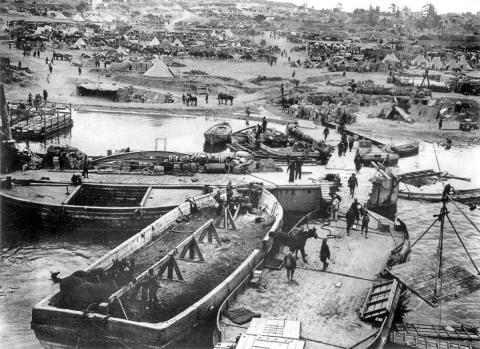Archaeological Survey on Gallipoli Battlefield

In April of 1915 soldiers from the British Army and Commonwealth, including the Australia-New Zealand Army Corps, and French Army and Empire, landed on the Gallipoli penninsula in an effort to open the route to Russia and seize Constantinople. There they faced Turkish troops from the Ottoman Empire in a brutal campaign fought in rugged terrain featuring extensive trench systems separated at certain points by as few as 10 to 20 yards. An ongoing archaeological survey has uncovered not only artificacts from ths First World War battle, but also has led to a greater understanding of how the men locked in combat lived and died in a region long known as a historic crossroads where Europe and Asia meet.
Though the battle at Gallipoli would play a role in weakening the Ottoman war effort, it is best known as yet another historical example of the dangers inherent in amphibious warfare as the British-French led operation ultimately ended in failure early in 1916. Perhaps no other military operation is as fraught with hazard as an amphibious invasion. The defender holds tremendous advantages over an attacker forced to transport literally everything needed to not only defeat the enemy but also supply the invading armies. Many nations and empires throughout history had their fortunes crushed, or nearly crushed from failed maritime operations. The Great Mongol Empire reached its limits when attempts to invade Japan ended in spectacular failure. Spain saw its empire hamstrung by the Spanish Armada’s destruction. Napoleon witnessed his empire cut short not only by his failed invasion of Russia, but also his numerous attempts to cross the English Channel.
During World War II further examples, regarding the dubious results from both amphibious landings and the recently developed and equally complex airborne operations, abound. Any enthusiasm Germany may have possessed for complex air and seaborne operations ended in the Pyrrhic victory represented by the conquest of Crete in the spring of 1941. The Germans decimated the Soviet Union’s airborne brigades after the Red Army’s failed Para drops behind German lines before Moscow early in 1942. An American amphibious invasion at Guadalcanal, in the Solomon Islands, hung in peril until late in 1942 - the Japanese Navy drove off the US Navy and isolated thousands of US Marines and soldiers on the beaches. Dieppe proved a complete Allied disaster in 1942. Dangerous German counterattacks against allied beachheads in Sicily, and at Salerno coupled with the near allied failure at Anzio in January 1944 to provide even more examples regarding the vulnerability and fragility inherent in armies hammered into a small beachhead and tenuously supplied from the sea; even with near absolute naval and air supremacy. In short, though today many regard amphibious operations as offering a fair chance of success, mostly due to Allied successes in the Pacific Theater of Operations during the latter year’s of the Second World War, at Inchon during the Korean War, and the successful British effort to retake the Falkland Islands; there remains a tremendous body of negative precedent littering the historical landscape in regards to assessing the efficacy of amphibious operations.



Post new comment